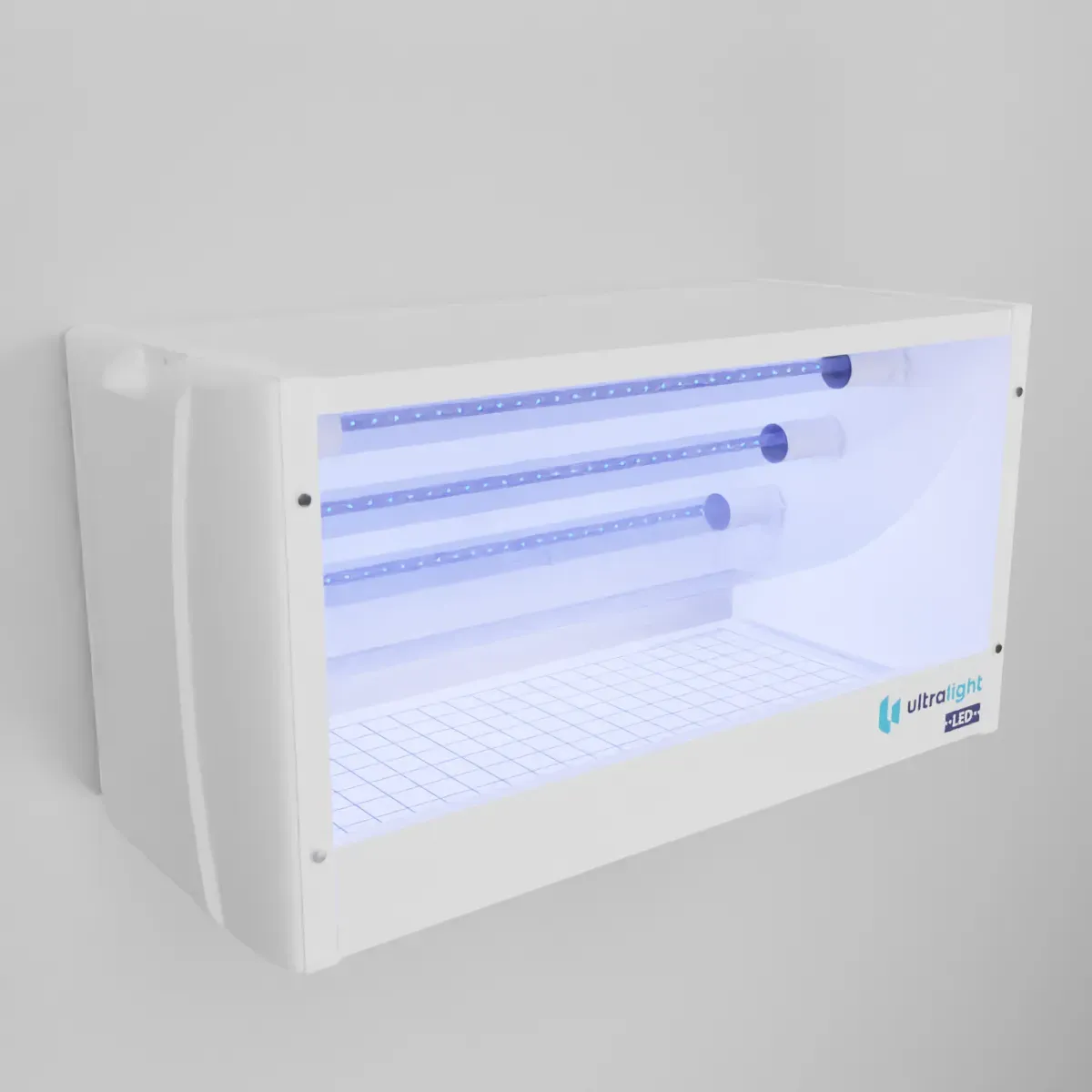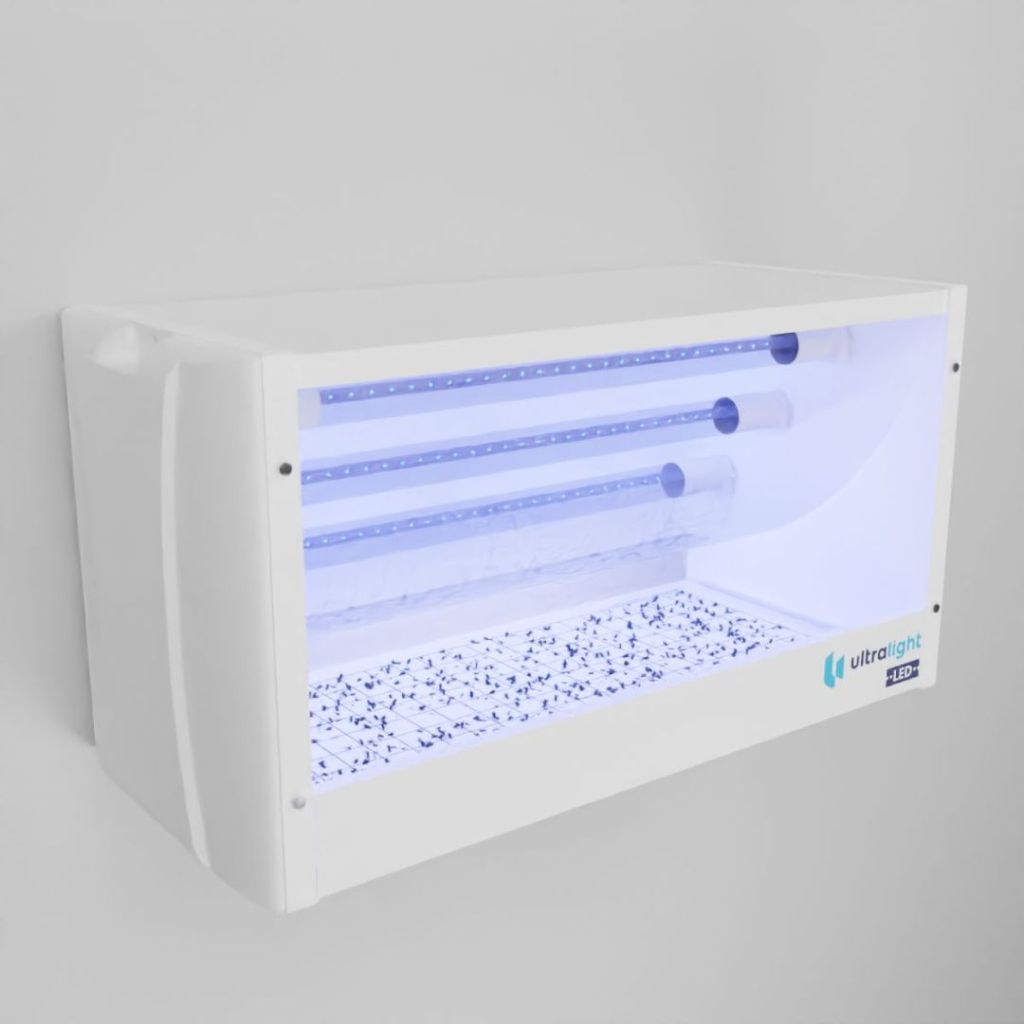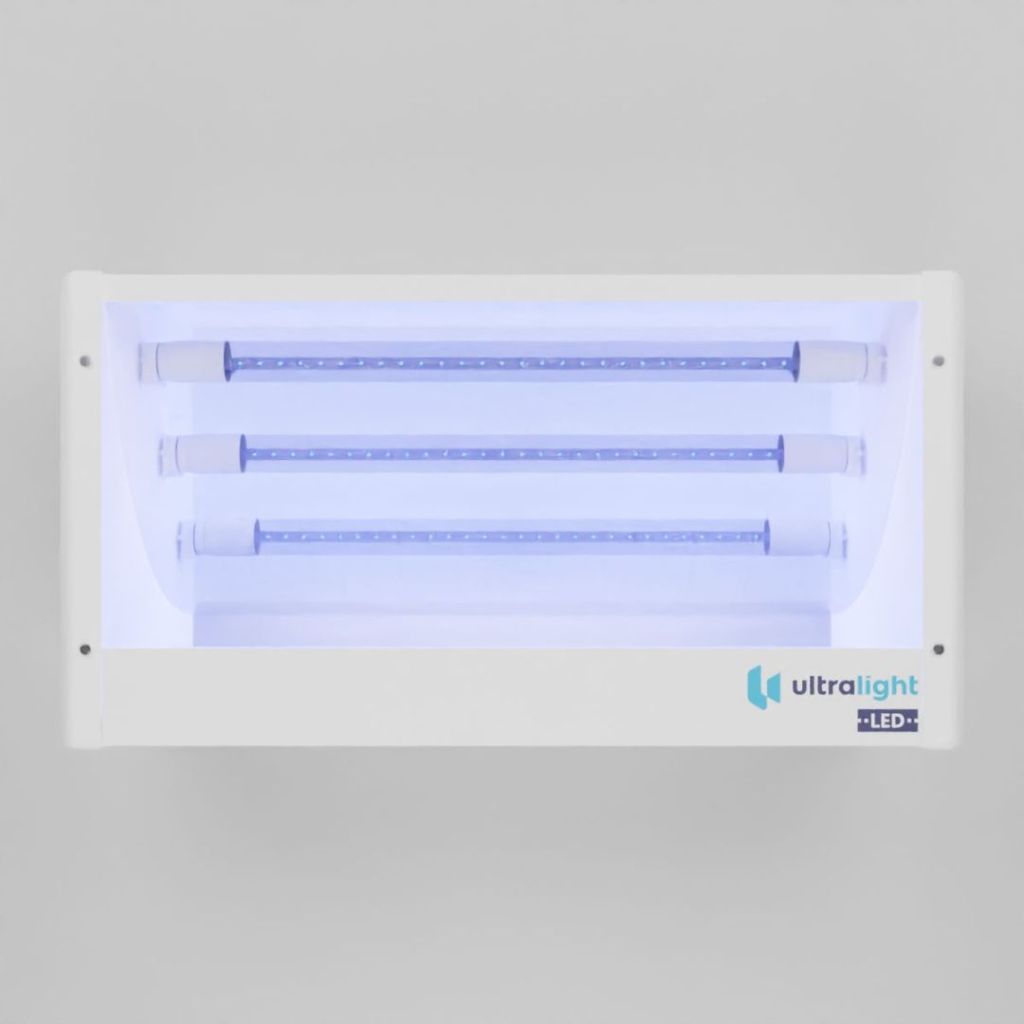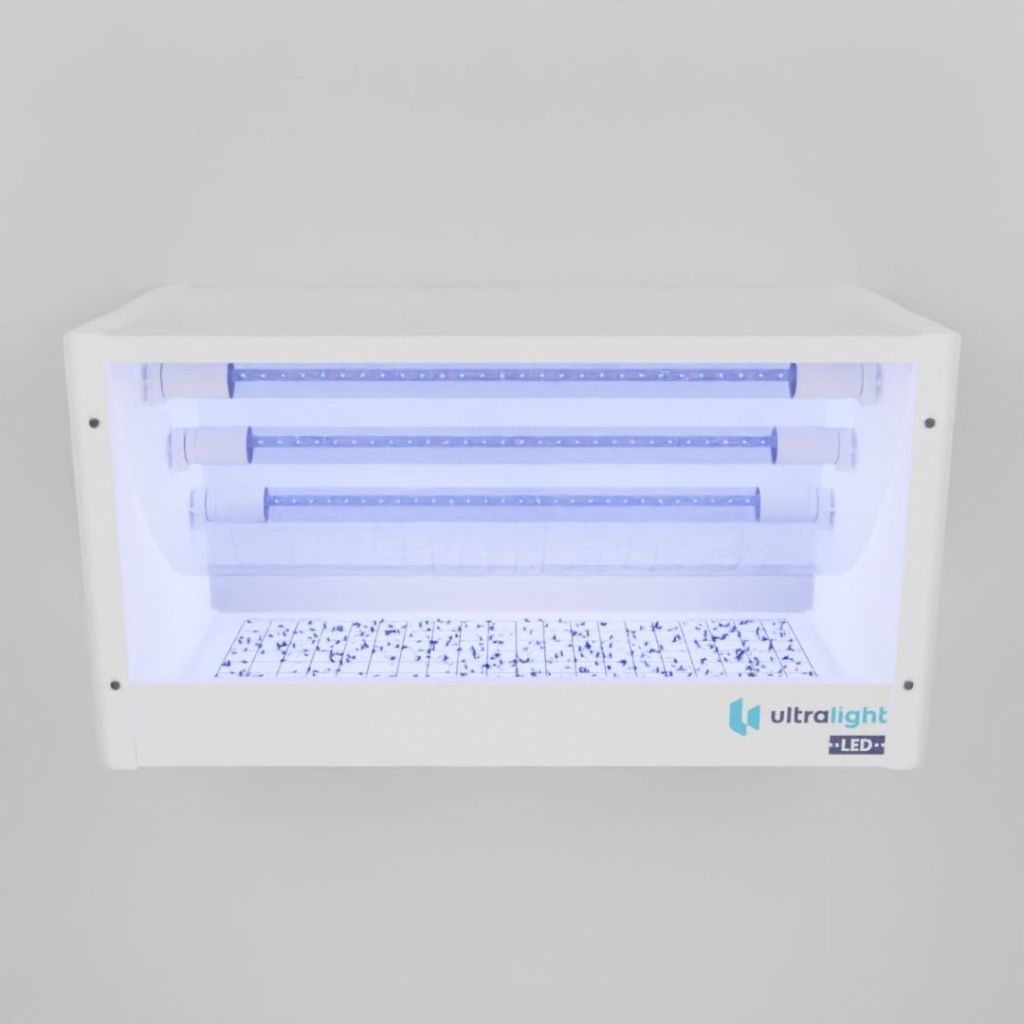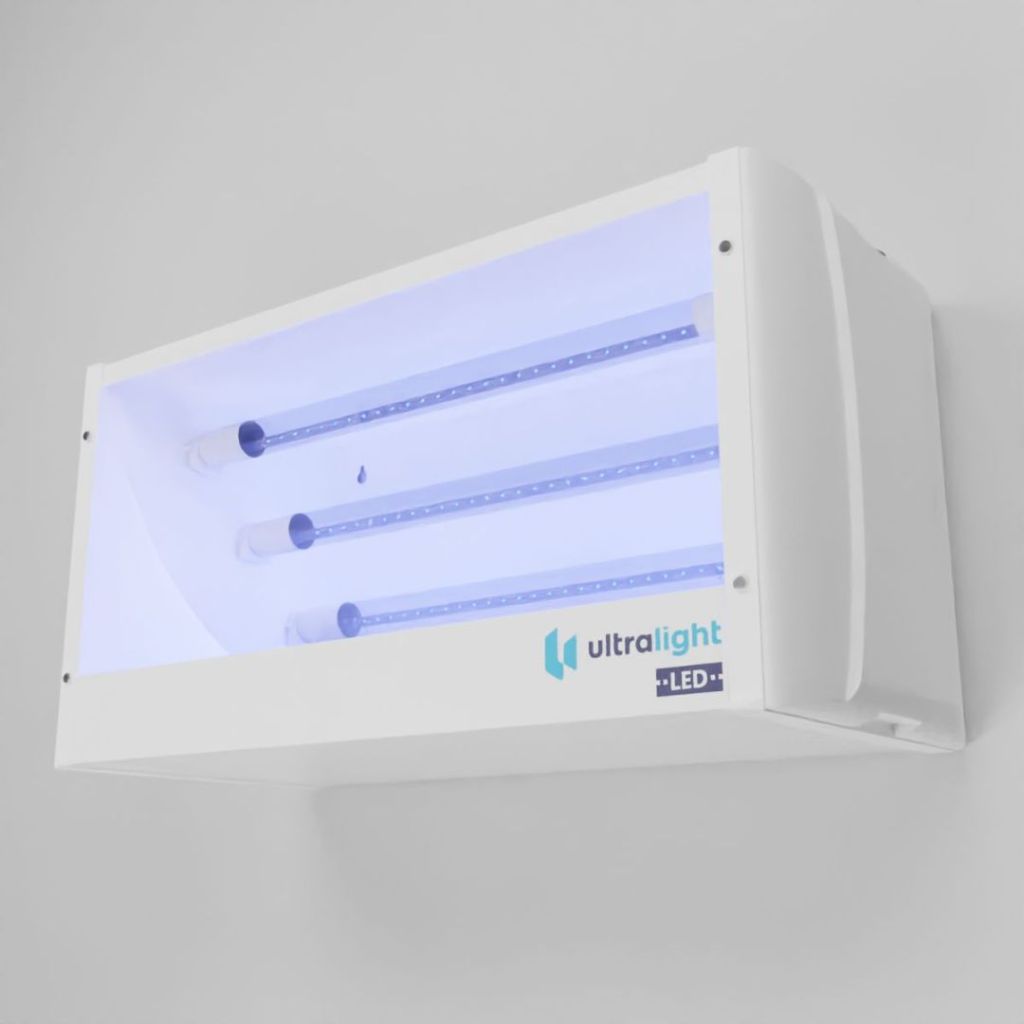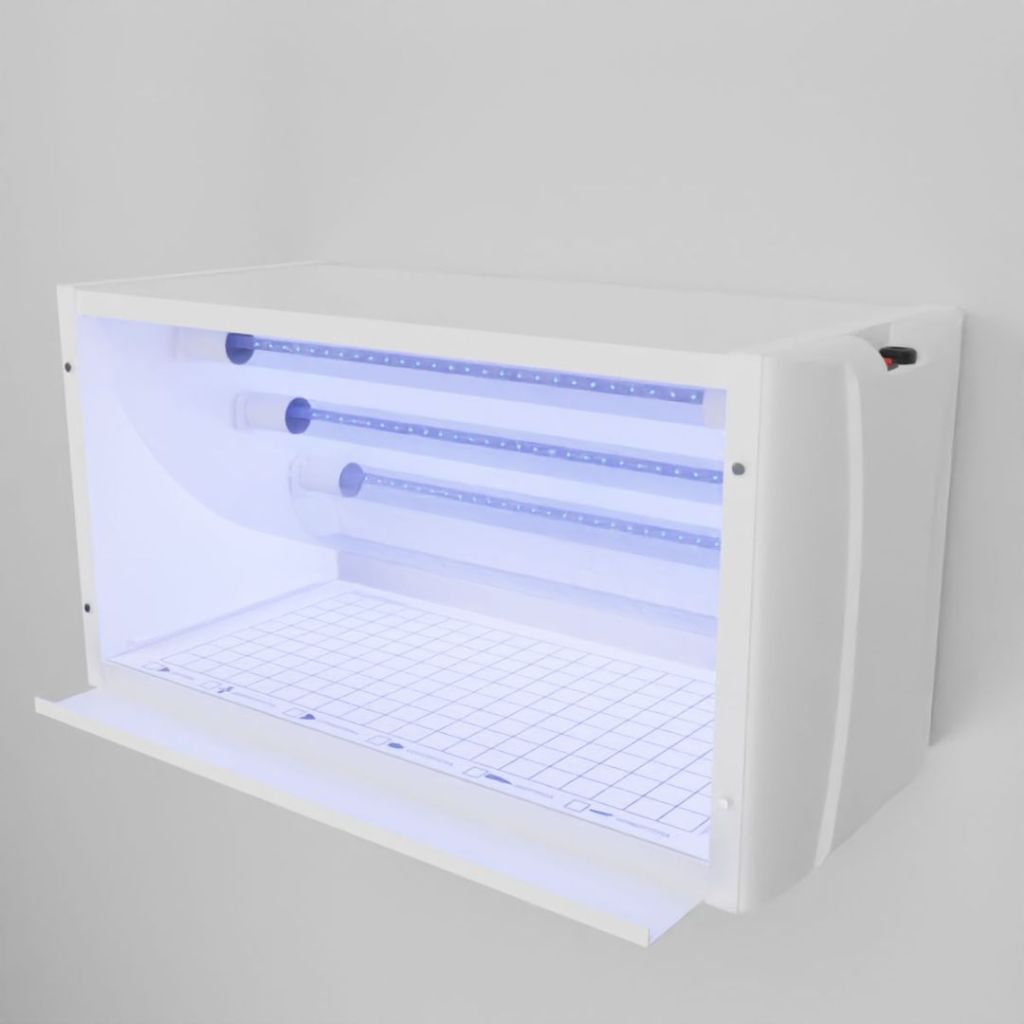Lateral LX-45 LED
Designed for environments such as warehouses in the food, beverage, pharmaceutical and cold storage industries, the Lateral LX-45 LED combines resistance and high technology to ensure maximum efficiency in combating and monitoring flies and flying insects.
UV-A LED lamps offer great insect attraction power with twice the useful life, up to 50% energy savings and also eliminate the need for ballasts, which results in less maintenance costs for the device.
Its robust structure offers all the strength of galvanized steel with white epoxy paint and polypropylene side fairings. It has a large opening for insects to enter, which makes the LX-45 Lateral an excellent choice for customers who need high performance in large environments, with an operating area of up to 70m².
Technical Sheet
| AREA OF ACTIVITY: | 70m² |
| DIMENSIONS: | 56 x 23 x 27 cm |
| INSTALLATION: | Side - Wall mounted |
| STRUCTURE: | Galvanized steel with epoxy paint |
| SIDE FAIRINGS: | Virgin Homopolymer Polypropylene |
| VOLTAGE: | Autovolt 100~240V |
TRAP COMPONENTS:
- 3 UV-A LED LampsEquivalent to 15W UV-A fluorescent lamps
- PETG lamp protector
- 1 Adhesive plate 450 x 220 mm
Frequently Asked Questions
-
Why buy an Ultralight light trap?
When you buy an Ultralight light trap, you are not just buying a product. You are buying quality, advice, safety, efficiency, technical assistance and the guarantee offered by the market leader for 26 years. You will be assisted by a consultant specialized in your company's segment, who will recommend the best trap model and the most suitable installation locations.
-
Are light traps allies of Food Safety protocols (GMP, CIP and HACCP)?
Yes, Ultralight light traps contribute directly and indirectly to Food Safety protocols. In addition to acting as an integral part of the physical barriers required in Good Manufacturing Practices programs, light traps are essential tools for controlling and monitoring flying insects, and an instrument for decision-making related to Integrated Pest Control, in addition to providing extra reinforcement for action at Critical Control Points. In general, Ultralight light traps are great allies for industries seeking to maintain a clean and hygienic production environment, minimize the risk of contamination and comply with Food Safety regulations.
-
Can I buy any model of light trap for my industry?
No. Before choosing the model of light trap to buy, it is essential to analyze the environment and speak to an Ultralight consultant specialized in your industry segment. The effectiveness of the light trap can be influenced by several factors, such as the type of industrialized product, the layout of the environment, the arrangement of the machines and the intensity of the lighting. These factors contribute to the presence or absence of a certain species of insect and also to its behavior, and consequently must be considered when choosing the ideal model.
-
Does the trap come ready to use?
The trap is supplied in cardboard packaging, already assembled and ready for use. However, it is essential to read and follow the recommendations contained in the Instruction Manual before installing it. The trap comes with 1 disposable adhesive plate (refill), which must be replaced with a new refill when 70% of its surface is covered by “stuck” insects.
-
How can light traps contribute to Quality Management?
Ultralight light traps are essential for quality management, helping to ensure that food products are produced in a clean and hygienic environment, free from contamination. They help prevent food contamination by controlling insects that can carry harmful bacteria; maintain food quality and integrity without physical contamination; reduce waste by avoiding the disposal of insect-contaminated products; monitor trends in pest populations; and help comply with Food Safety regulations, contributing to the management of the IPC program.
-
When should I replace the trap bulbs?
UV-A fluorescent lamps must be replaced every 8,000 hours of use, even if they appear to be functioning normally. This happens because the phosphor layer (the paint that coats the inside of the tubes) wears away, reducing light emission in the range that attracts flying insects by up to 40%. UV-A LED lamps, on the other hand, do not have a phosphor layer and must be replaced every 16,000 hours.
-
When should I replace the lamp protector (PETG)?
Lamp protectors (PETG) should be replaced every 8,000 hours of use, approximately 10 months, or sooner if they are scratched, yellowed or damaged. The UV-A light emitted by light traps causes the PETG to wear down, so to ensure effective attraction of flying insects, the used PETG should be replaced with a new one every time the lamps are changed.
-
When should I replace the light trap adhesive plate (refill)?
The adhesive plates should be replaced with a new refill when 70% of their surface is covered in insects. This usually occurs between 15 and 20 days, but may vary depending on the type of company or time of year. The population of flying insects is higher in the summer, so the replacement period may be shorter at this time.
Desenvolvido por Gálata Tecnologia - Tecnologia para Site ©




